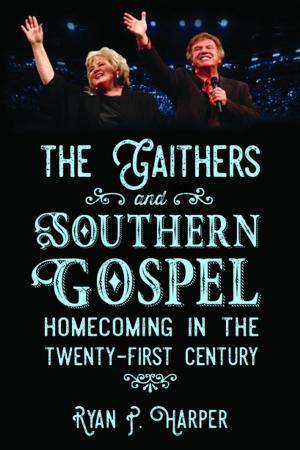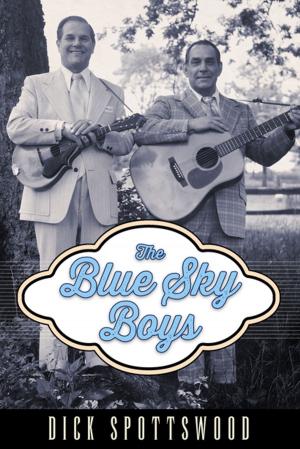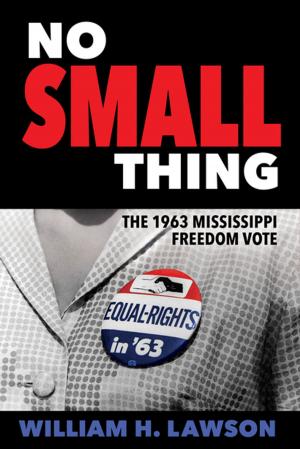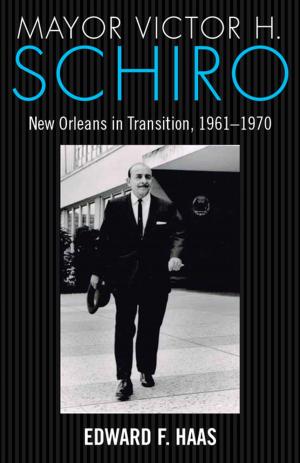| Author: | ISBN: | 9781604736328 | |
| Publisher: | University Press of Mississippi | Publication: | June 1, 2001 |
| Imprint: | University Press of Mississippi | Language: | English |
| Author: | |
| ISBN: | 9781604736328 |
| Publisher: | University Press of Mississippi |
| Publication: | June 1, 2001 |
| Imprint: | University Press of Mississippi |
| Language: | English |
Lafcadio Hearn (1850-1904) prowled the streets of New Orleans from 1877 to 1888 before moving on to a new life and global fame as a chronicler of Japan. Hearn's influence on our perceptions of New Orleans, however, has unjustly remained unknown.
In ten years of serving as a correspondent and selling his writing in such periodicals as the New Orleans Daily Item, Times-Democrat, Harper's Weekly, and Scribner's Magazine he crystallized the way Americans view New Orleans and its south Louisiana environs. Hearn was prolific, producing colorful and vivid sketches, vignettes, news articles, essays, translations of French and Spanish literature, book reviews, short stories, and woodblock prints.
He haunted the French Quarter to cover such events as the death of Marie Laveau. His descriptions of the seamy side of New Orleans, tainted with voodoo, debauchery, and mystery made a lasting impression on the nation. Denizens of the Crescent City and devotees who flock there for escapades and pleasures will recognize these original tales of corruption, of decay and benign frivolity, and of endless partying. With his writing, Hearn virtually invented the national image of New Orleans as a kind of alternative reality to the United States as a whole.
S. Frederick Starr, a leading authority on New Orleans and Louisiana culture, edits the volume, adding an introduction that places Hearn in a social, historical, and literary context.
Hearn was sensitive to the unique cultural milieu of New Orleans and Louisiana. During the decade that he spent in New Orleans, Hearn collected songs for the well-known New York music critic Henry Edward Krehbiel and extensively studied Creole French, making valuable and lasting contributions to ethnomusicology and linguistics.
Hearn's writings on Japan are famous and have long been available. But Inventing New Orleans: Writings of Lafcadio Hearn brings together a selection of Hearn's nonfiction on New Orleans and Louisiana, creating a previously unavailable sampling. In these pieces Hearn, an Anglo-Greek immigrant who came to America by way of Ireland, is alternately playful, lyrical, and morbid. This gathering also features ten newly discovered sketches. Using his broad stylistic palette, Hearn conjures up a lost New Orleans which later writers such as William Faulkner and Tennessee Williams used to evoke the city as both reality and symbol.
Lafcadio Hearn (1850-1904) was a prolific writer, critic, amateur engraver, and journalist. His many books-on a diverse range of subjects-include La Cuisine Creole: A Collection of Culinary Recipes (1885), Gombo Zhebes (1885), Chita (1889), and Glimpses of Unfamiliar Japan (1894).
Lafcadio Hearn (1850-1904) prowled the streets of New Orleans from 1877 to 1888 before moving on to a new life and global fame as a chronicler of Japan. Hearn's influence on our perceptions of New Orleans, however, has unjustly remained unknown.
In ten years of serving as a correspondent and selling his writing in such periodicals as the New Orleans Daily Item, Times-Democrat, Harper's Weekly, and Scribner's Magazine he crystallized the way Americans view New Orleans and its south Louisiana environs. Hearn was prolific, producing colorful and vivid sketches, vignettes, news articles, essays, translations of French and Spanish literature, book reviews, short stories, and woodblock prints.
He haunted the French Quarter to cover such events as the death of Marie Laveau. His descriptions of the seamy side of New Orleans, tainted with voodoo, debauchery, and mystery made a lasting impression on the nation. Denizens of the Crescent City and devotees who flock there for escapades and pleasures will recognize these original tales of corruption, of decay and benign frivolity, and of endless partying. With his writing, Hearn virtually invented the national image of New Orleans as a kind of alternative reality to the United States as a whole.
S. Frederick Starr, a leading authority on New Orleans and Louisiana culture, edits the volume, adding an introduction that places Hearn in a social, historical, and literary context.
Hearn was sensitive to the unique cultural milieu of New Orleans and Louisiana. During the decade that he spent in New Orleans, Hearn collected songs for the well-known New York music critic Henry Edward Krehbiel and extensively studied Creole French, making valuable and lasting contributions to ethnomusicology and linguistics.
Hearn's writings on Japan are famous and have long been available. But Inventing New Orleans: Writings of Lafcadio Hearn brings together a selection of Hearn's nonfiction on New Orleans and Louisiana, creating a previously unavailable sampling. In these pieces Hearn, an Anglo-Greek immigrant who came to America by way of Ireland, is alternately playful, lyrical, and morbid. This gathering also features ten newly discovered sketches. Using his broad stylistic palette, Hearn conjures up a lost New Orleans which later writers such as William Faulkner and Tennessee Williams used to evoke the city as both reality and symbol.
Lafcadio Hearn (1850-1904) was a prolific writer, critic, amateur engraver, and journalist. His many books-on a diverse range of subjects-include La Cuisine Creole: A Collection of Culinary Recipes (1885), Gombo Zhebes (1885), Chita (1889), and Glimpses of Unfamiliar Japan (1894).















